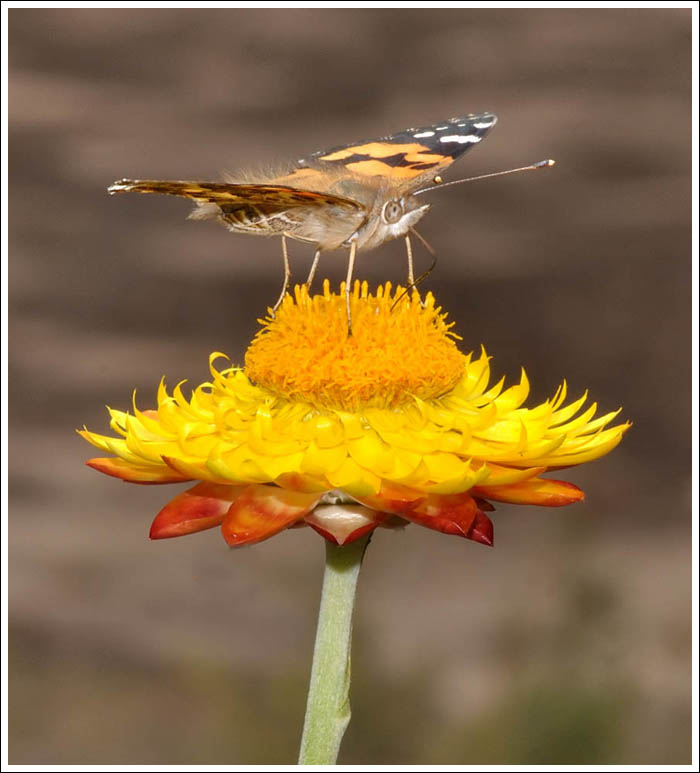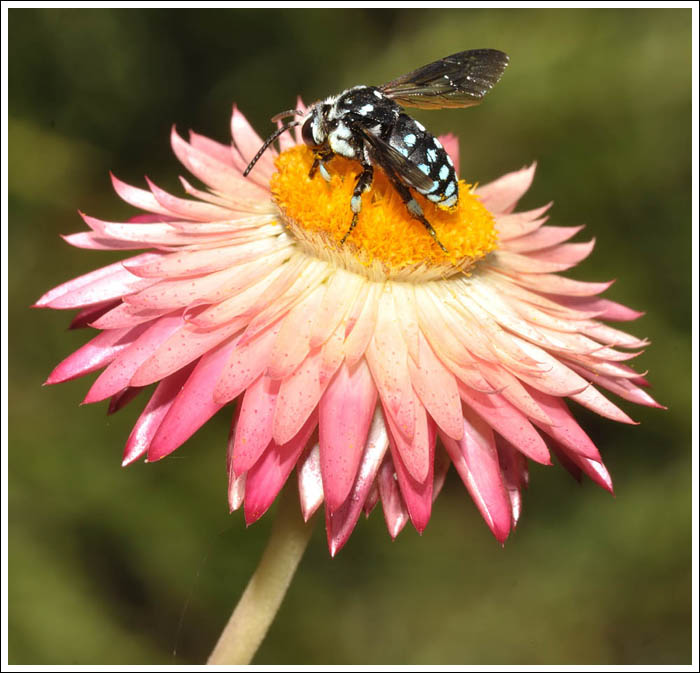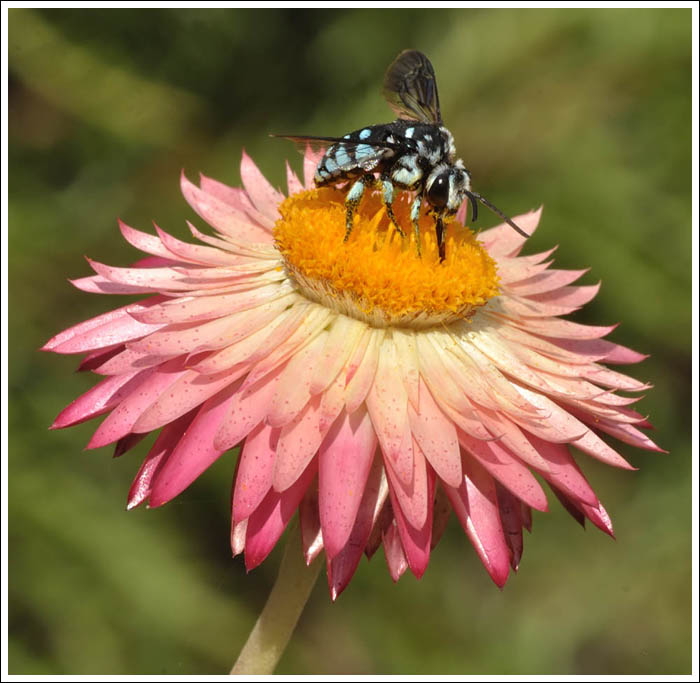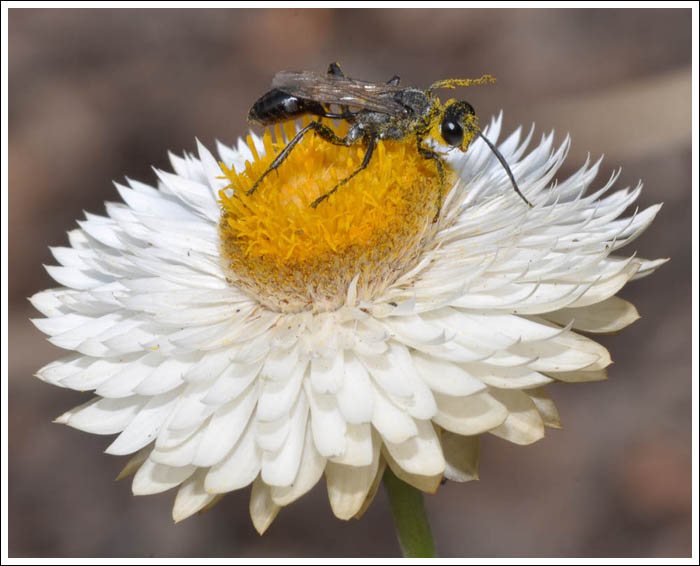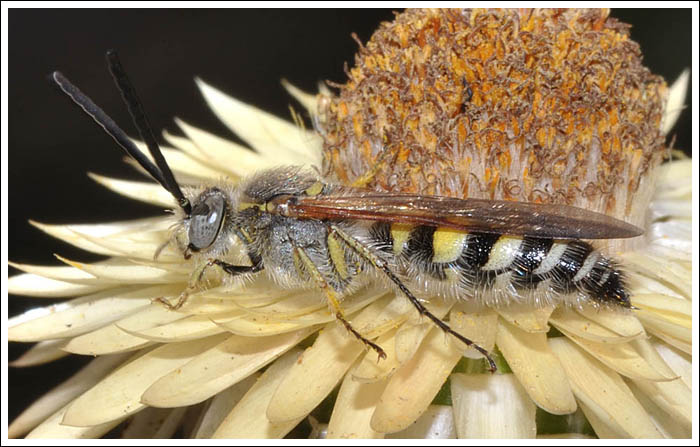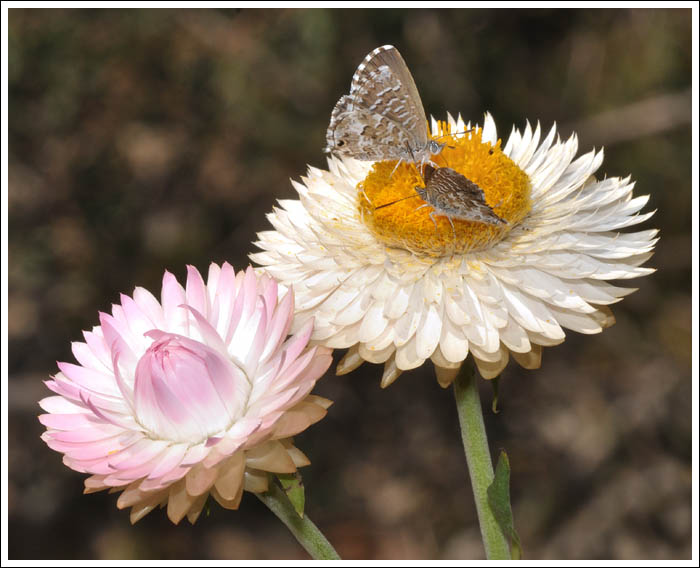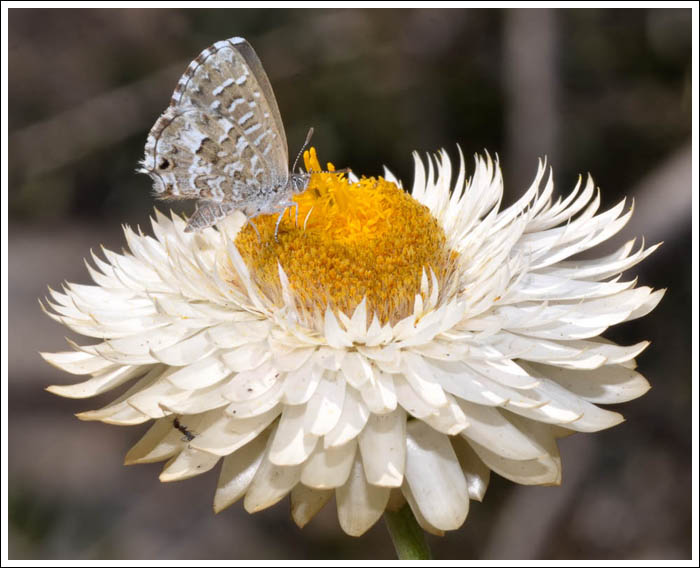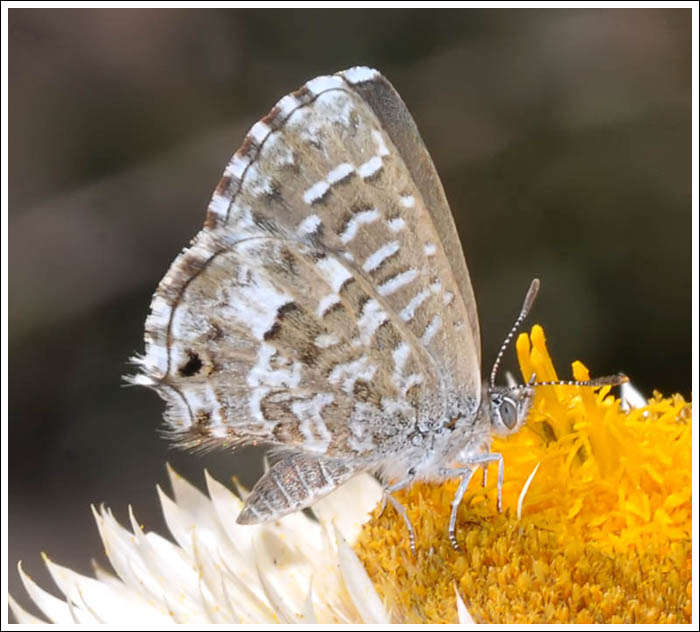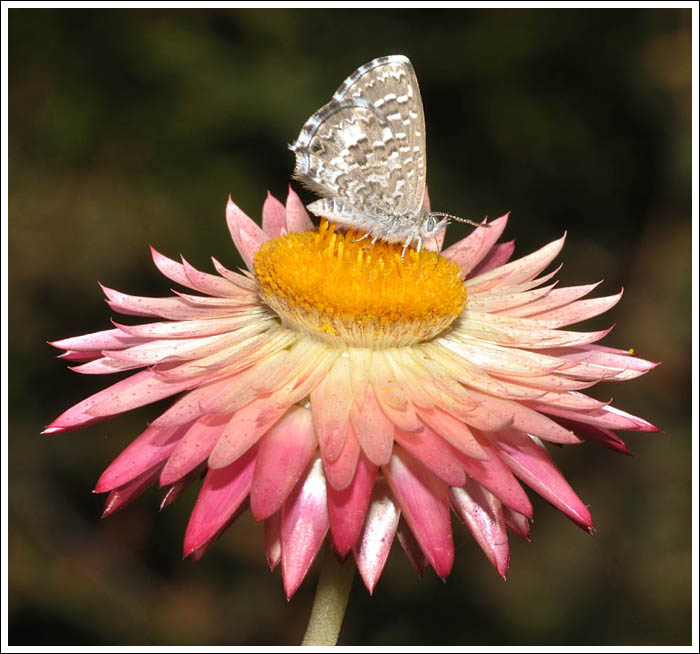The Xerochrysums continue to produce new flowers and the insects keep coming. One
tattered-wing Painted Lady fed ravenously and paid scant attention to the human as he
moved around seeking the best photographic angles.
More than one contact has remarked on the number of Blue-banded Bees that have been about this season, and coinciding with this are frequent sightings of Cuckoo Bees that lay their eggs in the Blue-banded’s nests.
Flower wasps of several different types have still been active as the season winds down.
Click to enlarge.

